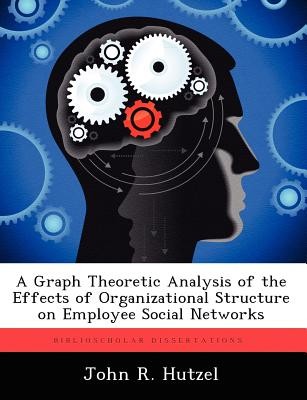
- We will send in 10–14 business days.
- Author: John R Hutzel
- Publisher: BiblioScholar
- ISBN-10: 1249578892
- ISBN-13: 9781249578895
- Format: 18.9 x 24.6 x 0.5 cm, softcover
- Language: English
- SAVE -10% with code: EXTRA
A Graph Theoretic Analysis of the Effects of Organizational Structure on Employee Social Networks (e-book) (used book) | bookbook.eu
Reviews
Description
A simulation technique was used to investigate the impacts of organizational structure on an organization's social network. By simulating personnel in an organization as vertices in a graph and the aging of the corporation as the aging of the same graph, the maturation of an organization was realized. The characteristic path length of the graph was measured after each year returning an optimistic average organizational distance. Results include the finding that, per this model, an organization's characteristic path length can drop over 50% in a 20 year period with consideration of edges of all strengths. Next a series of random searches were performed to measure the ability of an individual to search for information. A concern of this research is the difference between a partitioned and a non-partitioned organization's social network. A partitioned organization is defined as one in which personnel are restricted to smaller communities during a career. Partitioning the organization decreases the travel distance, in this model, when searching within a smaller community by 6% and it increases the travel distance when searching within the larger community by 12%. This must be considered along with the organization's information flow needs when structuring an organization.
EXTRA 10 % discount with code: EXTRA
The promotion ends in 18d.07:44:11
The discount code is valid when purchasing from 10 €. Discounts do not stack.
- Author: John R Hutzel
- Publisher: BiblioScholar
- ISBN-10: 1249578892
- ISBN-13: 9781249578895
- Format: 18.9 x 24.6 x 0.5 cm, softcover
- Language: English English
A simulation technique was used to investigate the impacts of organizational structure on an organization's social network. By simulating personnel in an organization as vertices in a graph and the aging of the corporation as the aging of the same graph, the maturation of an organization was realized. The characteristic path length of the graph was measured after each year returning an optimistic average organizational distance. Results include the finding that, per this model, an organization's characteristic path length can drop over 50% in a 20 year period with consideration of edges of all strengths. Next a series of random searches were performed to measure the ability of an individual to search for information. A concern of this research is the difference between a partitioned and a non-partitioned organization's social network. A partitioned organization is defined as one in which personnel are restricted to smaller communities during a career. Partitioning the organization decreases the travel distance, in this model, when searching within a smaller community by 6% and it increases the travel distance when searching within the larger community by 12%. This must be considered along with the organization's information flow needs when structuring an organization.


Reviews